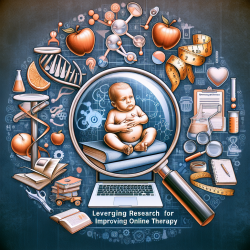Introduction
In the realm of pediatric healthcare, addressing procedural pain and distress is crucial for fostering positive outcomes. Recent research, such as the scoping review titled Clinical Hypnosis for Procedural Pain and Distress in Children: A Scoping Review, underscores the potential of clinical hypnosis as a promising intervention. This blog explores how practitioners can harness these findings to improve therapeutic strategies and outcomes for children.
Understanding Clinical Hypnosis
Clinical hypnosis involves guiding a child into a state of focused attention and heightened suggestibility, often using imagery and relaxation techniques. The scoping review analyzed 38 studies involving 2,205 children, highlighting the effectiveness of clinical hypnosis in reducing procedural pain and distress across various medical contexts. Notably, 76% of these studies reported moderate to large effect sizes, suggesting significant potential for clinical hypnosis to outperform standard care and other non-pharmacological interventions.
Key Findings and Implications
The review identified several factors influencing the outcomes of clinical hypnosis:
- Hypnotic Suggestibility: A strong predictor of successful outcomes, suggesting the need for tailored approaches based on individual responsiveness.
- Intervention Timing: Pre-procedural and live hypnosis sessions were linked to better outcomes, emphasizing the importance of timing in intervention planning.
- Delivery Mode: Live hypnosis, whether self-directed or guided by a clinician, showed significant efficacy, though taped hypnosis also holds promise.
These insights underscore the need for practitioners to consider these variables when implementing hypnosis in clinical settings. Tailoring interventions to the child's unique needs and preferences, while considering the timing and mode of delivery, can enhance therapeutic efficacy.
Challenges and Future Directions
Despite the promising findings, the review also highlighted gaps in current research. Notably, the safety and acceptability of clinical hypnosis in broader pediatric contexts require further exploration. Additionally, the heterogeneity in study designs, populations, and hypnosis techniques calls for standardized protocols and comprehensive reporting to facilitate replication and comparison.
Future research should focus on:
- Exploring the effectiveness of hypnosis in diverse medical contexts beyond oncology.
- Investigating the potential of combining hypnosis with other non-pharmacological interventions, such as virtual reality.
- Conducting qualitative studies to understand children's experiences and perceptions of hypnosis, enhancing its acceptability and implementation.
Conclusion
Clinical hypnosis emerges as a powerful tool in pediatric care, offering a non-invasive, adaptable, and effective approach to managing procedural pain and distress. By integrating these research insights into practice, clinicians can enhance children's well-being and foster more positive healthcare experiences. As we continue to explore and refine these interventions, the promise of clinical hypnosis in pediatric care becomes increasingly tangible.
To read the original research paper, please follow this link: Clinical Hypnosis for Procedural Pain and Distress in Children: A Scoping Review.










